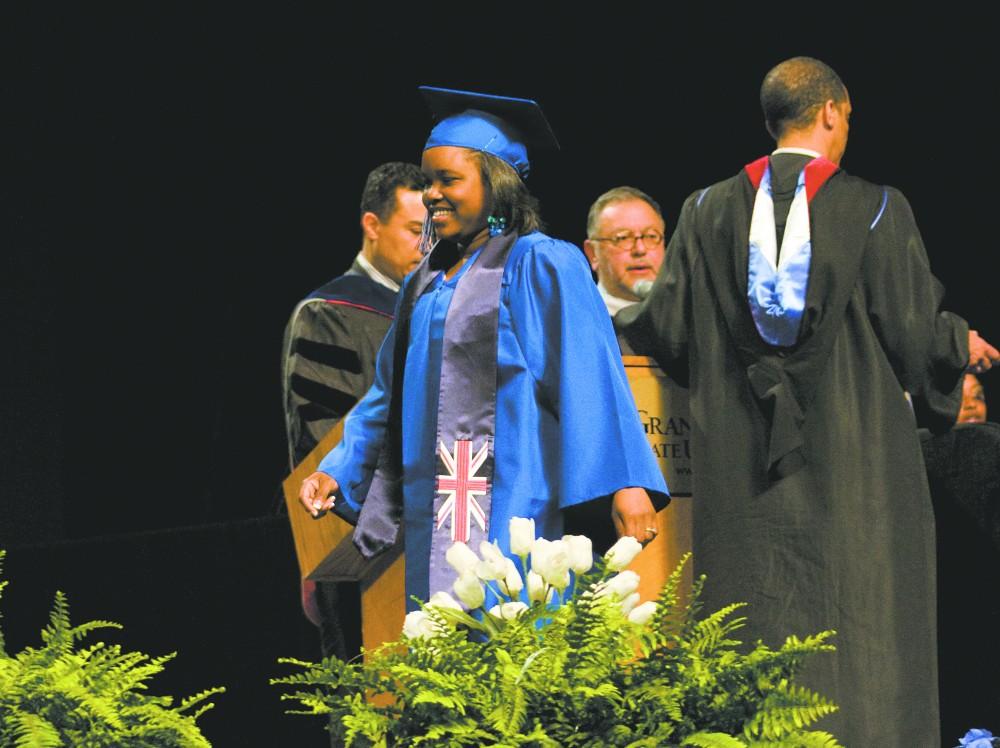Women out earning men at GV since 1984

GVL / Kate Kaurich Commencement Winter 2011
May 14, 2011
As graduate students crossed the stage in commencement ceremonies across the country this spring, women outnumbered men for the first time in U.S. history.
According to a U.S. Census report, female graduate students in 2011 earned more degrees than their male counterparts; however, women have been the primary graduate degree recipients at Grand Valley State University since 1984.
Currently, women outnumber men in graduate programs at a ratio of two to one, with 66 percent of the graduate degrees awarded in the 2009-2010 academic year going to female students, according to data from the Office of Institutional Analysis.
John Stevenson, the associate dean of Graduate Studies at GVSU, said the overwhelming numbers of women in GVSU graduate programs can be attributed largely to the types of programs GVSU has.
“Since our first graduate programs at GVSU were among the disciplines of education, nursing, and physical therapy, all professions where the majorities of practitioners are female, we have been in line with these trends,” he said.
Women currently outnumber men in the College of Community and Public Service, the College of Liberal Arts and Sciences, College of Education, College of Health Professions, and the Kirkhof College of Nursing. Only the Padnos College of Engineering and Computing and the Seidman College of Business are male-dominated, although female enrollment in the Seidman College has increased in recent years.
Stevenson said the university is beginning to see the start of gender equity in traditionally female-dominated fields as well. For example, the number of male graduate students in KCON has increased to 18 percent, compared to 5 percent in 2004.
Marlene Kowalski-Braun, director of the Women’s Center at GVSU, said much of women’s success in higher education can be attributed to Title IX, a 1972 education amendment that forbade sex-based discrimination in federally-funded academic fields.
“Now, 40 years later, two generations … girls enter kindergarten knowing they can achieve the highest academic degrees,” she said. “Social change takes a long time and we are now reaping the benefits of many feminist efforts.”
As the number of women pursuing higher education continues, Stevenson predicted those numbers would translate to more female professors and greater pay equity. Women earned 77 cents for every dollar a man earned in 2008, according to the most recent Census data.
“Hopefully, the increasing number of women graduate students will translate into increases in the number of women entering faculty positions and delivering graduate education,” he said. “As the number of women faculty grows, equity in salary and opportunities, as compared to those of men, may be reached sooner.”
Graduate degree data from 2010-11 will be available in July at www.gvsu.edu/ia.





















